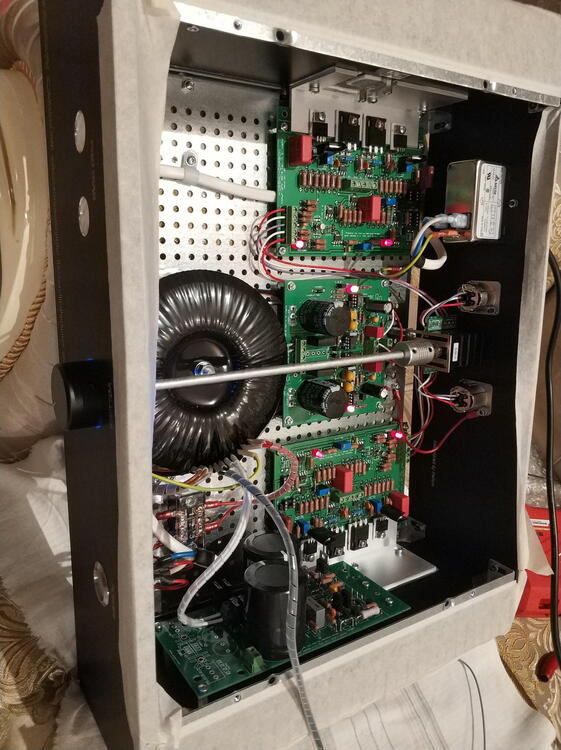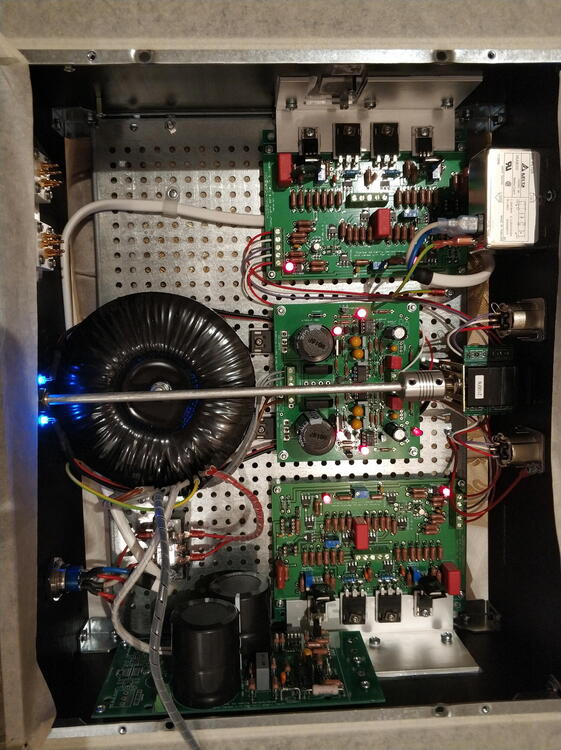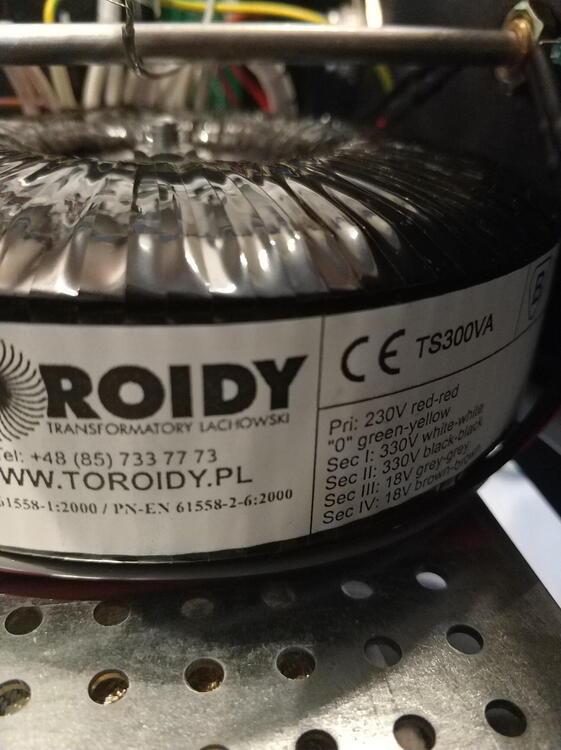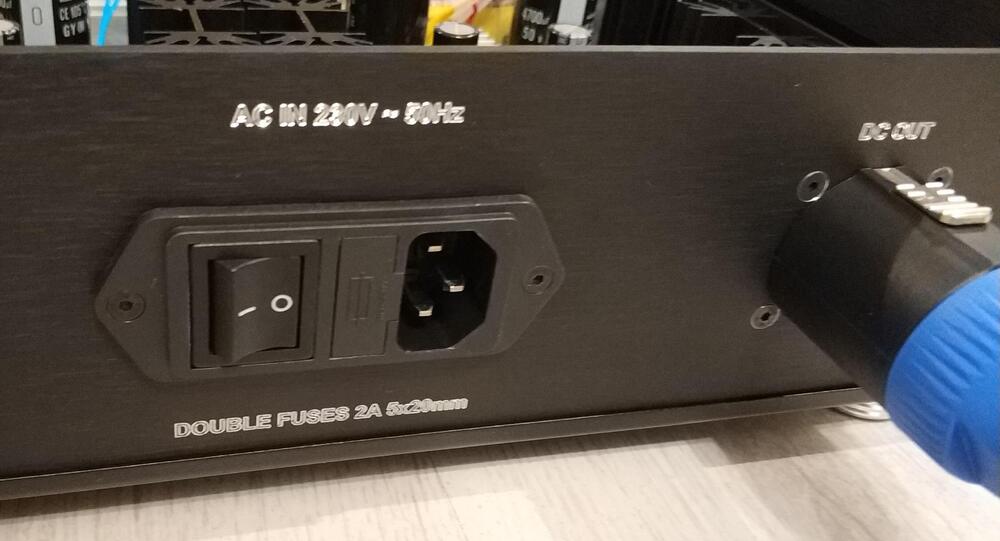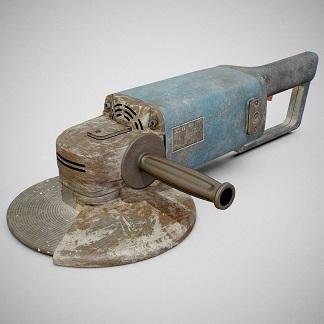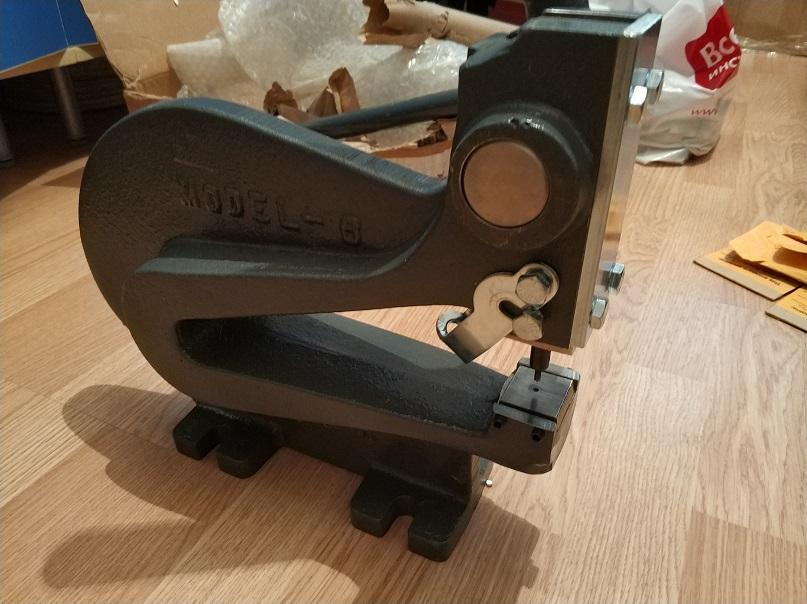
Helium
Returning Member-
Posts
129 -
Joined
-
Last visited
Content Type
Profiles
Forums
Events
Everything posted by Helium
-
Thank you folks. Yes, currently GRLV has no ground connection with HV ground. Didn't know that non-tying LV and HV grounds is so critical. Usually it ends up with hum/noise, such sort of things. I will fix that and see. I the mean time I adjusted CSS with GRLV 15VDC to 18mA, so AMP boards are presumably good. Currently amp is almost done, need to replace DN2540N5 on +400 PS.
-
I've ran into an issue building Carbon. I'm using split PS boards + separate GRLV. When I connect PS boards to transformer (without AMP boards) everything is fine, and voltage is +405/-406VDC (bias is a bit low at 563 but that's non-relevant issue and a matter of zener tolerances). But as soon as I connect AMP boards, transformer starts to heat up a lot (I didn't risk to leave it connected for more that 15 sec). Maybe it will start melting. Here is my connection: +400 goes to each AMP's B+ terminal, -400 goes to each AMP's B- terminal (obviously). However GND from each PS from goes to nearest AMP board only and are not tied together or by a sort of star terminal, therefore GNDs are not shorted. Am I missing a point here? Should connecting GNDs of each split boards remedy the transformer heating problem? Easy to check by yourself, one must say, but one of my DN2540N5 went bad and I cannot check it right now. This is my transformer spec (must be plenty of power, so insufficient VA rating must not be a reason?): 1 x AUDIO GRADE WITH EPOXY FILL INTERIOR PRI:230V SEC: > 2x 330V under load (350mA) (separate windings) > 2x 18V under load (500mA) (separate windings) - VA rating around 300VA
-
and now for something completely different part 3
Helium replied to kevin gilmore's topic in Do It Yourself
It's normal for 15030/15031. I had the same thing. Amp will work anyway and DC offset will be nulled out. If you are uncomfortable with hfe difference, try using 2sa1930/2sc5171, much closer to each other by hfe. Seem still obtainable if you search. -
Wow Soviet) A good old wine) Correct me if I'm wrong, but like AMP series, thread all the way down to gasket (rarely beautifully looking) implies that the gasket is left outside the panel. I usually like to put connector inside the case (this is low voltage Neutrik Speakon, but same idea).
-
Hi starcat. What are P/N of the connectors and housings and pins you are using? I'm tempted to try these. As far as my quick search revealed, pins and wire entry seals don't come in bundle and are sold separately, aren't they? My concerns is that CPC series seems to be rated for 250VDC/VAC only, and that there is no space between the thread and the gasket, which means that the gasket itself will be outside the panel/case. Any considerations?
-
Interested in building a kgsshv don't know where to start.
Helium replied to boinger's topic in Do It Yourself
Where are you? I've got lots of them, new, maybe 20 of each. -
Lol the above board seems to incorporate amb's sigma22)) Unlike Kevin, Ti is definitely not happy when this happens))
-
Check this video by Haas: You may want a special tapping drill to make thread go deeper in the limited depth of blind hole.
-
Thanks, I've already start thinking angle grinder FTW to butcher my nice completed T2 PCB. Just kidding, I would do it on CNC if that happened. Kevin, so how do I wire, simply each PS board to each channel (=half T2 board)? I'm afraid I will encounter heavy ground loops.
-
Quick question. Do I need to cut T2 PCB in halves to separate GNDs if I'm making dual PS, one for each channel (double the number of PS boards and double the number of transformers)?
-
If you are making a separate +15/-15VDC power supply board (GRLV), you can do with two Bias GRHV PCBs.
-
If you use MLCC C0G/NP0 grade, I doubt the difference will be audible. Or, MLCC will be even better. At least amb votes for them: https://www.amb.org/forum/about-building-beta24-t3688-10.html?hilit=mica#p34356
-
Beautiful! Kerry, how did you treat the chassis to achieve polished surface? Seems to be steel, not aluminum? Is is mechanically polished or galvanized?
-
Can you keep the physical size and standoff hole placement same to GRLV with RS402L (goldenreference6d.zip)?
-
Just wanted to share one of my most favorite acquisitions among hundreds of manual and electric tools. Heinrich deep throat is capable to punch holes in the center of 400mm panel (hello large enclosures like Modushop Slimline). No burrs, very clean holes, any hole is perfectly perpendicular to surface, and waaayy more accurately positioned than made by drill bit as you can never avoid drill bit wandering. Precision is close to CNC milling. I also use smaller punch Roper Whitney XX with smaller throat.
-
Apparently a good tool, will get one. Wish it had No-mar teflon face like some countersink microstop limiters.
-
You will need 1 x HV board with bias section and 1 x HV with +/- 15VDC low voltage section. If you populate +/- 15VDC low voltage section on one of HV boards, you don't need separate GRLV board. If you go with separate GRLV board (more luxury solution), you can use either single GRLV board producing both positive and negative 15VDC, or split boards, each producing +15VDC and -15VDC. Also, if you go with separate GRLV board, you can do with 2 x HV boards with bias section (saves money if you order boards at PCB house). You need to populate bias section on one them only. Correct. Nothing required. It will accept unbalanced input as well, sound volume will be less. 7815 is noisier than GRLV. GRLV presumably produces cleaner +/-15VDC. Piece of advise: go with amb's Sigma22 for low voltage. Much cheaper than GRLV to buid. That is single +/- GRLV. You can go with split positive and negative GRLVs, as mentioned above. Not recommended IMHO. What if you need to upgrade your DAC in the future? Not needed for Carbon (=no tubes). Leave unpopulated. Use GRHV onboard low voltage section, if you want to cut costs. Or use Sigma22 instead of GRLV, and order 2 x HV bias boards instead of 1 x HVbias + 1 x HV w/low voltage. Really not many options to save money. Most expensive parts are main filter caps (40 USD/ea, and you need 4 of them), balanced potentiometer of your choice, transformer(s) and casework. None can be dropped out.
-
Actually it depends of user's cables. If these are highly capacitive, it may start to oscillate, who knows. Ferrite _may_ help with it.
-
For me it doesn't look like IC (THAT) related issue. Does the hiss increase as he turns the volume up? If yes, then it's likely to be some grounding issue. Otherwise it may be oscillation (though I don't know if dynalo is prone to oscillation). Let him try to temporarily fasten hinged ferrite cores on either headphone cable or input cables or both and see if it makes difference.
-
Digikey? Bought from them 1 week ago 50 pcs, still available.
-
Hmm, Mouser has C2M1000170D in stock. I bought 12 pcs week ago, and they are still available. Am I missing anything?
-
There is plenty of 1N4007 diodes. P/N E3/54 you provided is just a package type. Search another one, this generic diode cannot be out of stock for sure. https://www2.mouser.com/ProductDetail/Vishay-Semiconductors/1N4007-E3-54?qs=sGAEpiMZZMtbRapU8LlZD0HbIjlpuZ44RKYLoMCkjXw%3d Same for 0.1uF 50V. There are tons of alternatives. If you would like to stick to Kemet, try searching Kemet 315, 320 series as well. 100V is OK also. Just mind lead spacing.
-
What's wrong with these boards? By new boards do you mean published a week ago?
-
Question to Mr. Gilmore: Any chance to see your photos linked in this thread? Particularly about T2 build progress (making enclosure, stuffing the boards etc. Actually I'd love to see all of them). Could they be uploaded somewhere?
-
amb explained here, same for susy dynalo: https://www.amb.org/forum/susy-dynahi-v2-t2868.html#p26515

